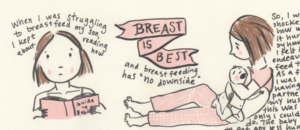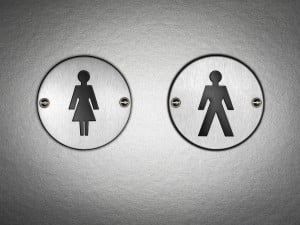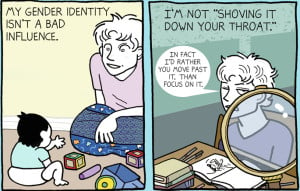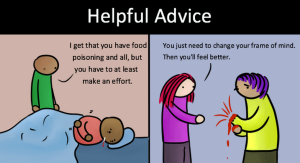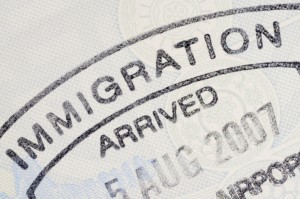
Source: Utah Citizen Network
In a recent panel discussion held by the National Organization for Women (NOW-NYC) on feminism for women of Color, I was asked why mainstream feminisms has not considered immigration a feminist issue.
As a transnational Latina feminist, immigration has always been one of my top priorities, right alongside reproductive justice and the wage/professional gap that affect mostly women like me.
As this question was presented to me, I struggled for a response because on the one hand, I don’t understand how an issue that disproportionately affects women and children is not considered a feminist priority, but on the other hand, I also understand that when something doesn’t directly affect a group of people, they are less likely to regard it as most important.
As transnational women of Color, we understand that if immigration reform is not a priority, our families will be the ones affected the most.
This has been said many times, but I’ll say it again: Mainstream feminists must listen to women of Color when they voice their struggles.
I don’t believe feminisms is a monolithic movement, so I understand why some feminist groups and organizations focus their work on the issues that affect their immediate communities.
But hear me out, and you’ll understand why immigration reform must be seen as a feminist issue foremost.
Gender Bias in the Immigration System
Our immigration system is steeped in gender biases that disproportionately affect women and children.
A staggering three-quarters of all immigrants in the US are women and children, and most of these women are marginalized by our immigration system and laws.
70% of all immigrant women arrive with a family visa. This visa program allows legal immigrants to request their family members in their home countries in the hopes of reuniting the family.
Other ways in which immigrants arrive in the United States is via employment visas, which are awarded to individuals in highly sought after professions in STEM, or to individuals that are exceptionally skilled in the arts.
However, our immigration system is heavily influenced by gender roles that assume men are the heads of households, while women and children are dependents.
These biases affect the application process, allowing men’s applications to be seen as the most favorable.
This is most often seen in applications for family visas, where male relatives often become the petitioners for their female relatives, a process that can take up to twenty years in some cases.
While relatives await visa approval, they must remain in their home countries often without much needed economic support, and must renew their application every year it isn’t approved, which can become a financial burden.
To make matters direr, they cannot be employed while awaiting visa approval because that could be seen as a sign of independence and her need for a visa petitioner could be questioned.
Similarly, women are marginalized by employee-based immigration requirements.
Careers in male-dominated fields, specially STEM, are seen as most favorable, which wouldn’t be a problem if women weren’t grossly under-represented in these careers.
As an engineer, I see this gender gap every day. In the United States, women comprise 24% of STEM professionals, while Latinas make up only 3% of STEM professionals.
The gender gap in these professions is even wider in Latin America and other countries where immigrants arrive from.
Yet 140,000 visas a year are available for these mostly male professionals.
Because these visas are awarded to mostly men, their spouses are turned into dependents by our immigration system that allows visa holders’ families to come with them, but does not give them the legal right to work in the United States.
These women might have been professionals in their home countries, but due to our immigration systems’ biases, they can only be dependents in the United States.
At the other end of this spectrum are migrant and domestic workers, with only 10,000 visas a year available for them.
Employment visas for these so-called “low skill” professionals are an uphill battle, and immigrants are often reluctant to even apply for work visas with these credentials.
Although immigrants with agricultural and domestic skills are in high demand, our immigration system does not value their work to provide them with a legal pathway to the United States.
It’s no surprise that of the 11 million undocumented immigrants in the United States, many are migrant workers in agriculture, oftentimes working under inhumane conditions and for little pay and no benefits.
The public dislike for undocumented immigrants is distressing, but what we don’t realize is that we rely on their work to make our lives comfortable.
Domestic Work: Low Wages and No Legal Protections
Domestic workers are often mistreated because their work is considered “women’s work” and therefore undervalued.
Child rearing, cleaning, washing, and cooking are not activities people often associate with careers and jobs, and that means that the people who do this work as equally undervalued.
And while working conditions for most domestic workers is not ideal, the treatment they receive and the wages they get paid are often dependent on their race and immigration status.
According to this study on domestic workers, 46% of domestic workers are foreign born and 35% are non-citizens.
Mainstream feminism has acknowledged that domestic worker protections are a feminist issue, but we fail to see the connection to immigration reform.
Immigrant women are mostly poor and hold jobs as domestic workers, yet these jobs offer the least amount of benefits.
They are generally underpaid, with 70% of them making less than $13 an hour. The women are also overworked and are not entitled to health benefits, paid time off, or sick days.
Unsurprisingly, 85% of undocumented immigrants who are domestic workers do not complain about their working conditions and low wages for fear that their immigration status would be used against them.
The fear of mistreatment and deportation is always looming for undocumented women, which is exacerbated when they have families of their own to support.
Our legal system does little to help them, as domestic workers are often employed in private homes and are excluded from coverage under federal employment and labor laws.
Similarly, they are excluded from protections by the Occupational Safety and Health Act, because the act does not cover employers who do household work.
We depend on domestic workers to rise up the career ladder, to take care of our children, and to clean our homes. These women are integral to our professional and personal development, and we owe it to them to care about their lives and that of their families.
Domestic and Gender-Based Violence
Women are disproportionately affected by the delay in immigration reform.
While 1 in 4 women in the United States experience domestic violence, immigrant women are 3 to 6 times more likely to experience domestic violence.
Services for victims of domestic violence are not dependent on immigration status, so providing protection to these women will not result in legal repercussions.
Domestic violence organizations and shelters are trained in helping immigrant women navigate the system and find the protection they need
In truth, allies and organizations need not to be experts in immigration in order to provide support for undocumented women. As advocates our role is simply to inform undocumented women and their families and ensure they receive the assistance they need.
It is especially important to know that undocumented women suffer from a complex intersection of immigration status, violence, sexism, and racism.
Their abusers manipulate their lives by using their precarious immigration status as a threat.
For this reason, we fought hard to make sure VAWA had provisions for immigrant women, and the work paid off as visas are awarded to victims of domestic violence, and for victims of persecution, yet the battle is only half won.
Not only are immigrant women more likely to face domestic violence than American women, they are also less likely to report it for fear of deportation.
During the NOW-NYC panel I attended, Tiloma Jayasinghe, the executive director of Sakhi for South Asian Women, spoke about VAWA and its failures.
As mainstream feminists fought to ensure VAWA was reenacted, immigrant women were rarely invited to attend meetings and discussions.
The results are that we now only have a law-and-order approach to domestic violence, which isn’t always the best tool when dealing with immigrant women, and especially undocumented immigrants.
If the only recourse for undocumented victims of domestic violence is to call the police and file a report, they expose their legal status to a figure of authority. While women in such situations are protected from deportation, it is a precarious position to be in.
VAWA protocol also calls for mandatory arrests, but this may discourage women from calling the police for fear that their partners could be deported or sent to jail.
As many of them rely on their spouses for the family’s financial support, they fear losing their source of income and livelihood.
Deportation
Deportations have increased, and children suffer the most when parents are deported.
In 2012, the Obama administration deported 409,849 undocumented immigrants, the highest number of deportations on record so far. Overall, 1.5 million undocumented immigrants were deported in President Obama’s first term.
And while deportations break families apart, it is hardest on children, especially those born in the United States who regularly stay behind when their parents or guardians are deported.
The number of children left without guardians has tripled in the last five years, from 8,041 in 2008 to 24,481 children in 2012, and these numbers may represent only a fraction of the total number.
Most of these children are moving from foster homes, to shelters, and eventually to relatives living in the United States, but their fate depends on a crucial part of immigration reform – the Dream Act, which has failed to pass.
Families not only live in fear for their lives, but that of their children.
And who can blame them for having these fears when the threat of their children are left to fend for themselves and become “unoccupied minors” looms.
Brianda is a twenty-three year old young woman whose mother was deported nine years ago to Mexico. Her father passed away thirteen years ago, forcing her mother to cross the border in hopes of forming a better future for her children. As the eldest child responsibility for her younger siblings fell on her hands, so that for the last nine years she had to be her siblings’ sister and mother.
“Family comes first, so that’s the way I was raised that before anything else you have to take care of your family… Now that my parents are gone I have to take care of my family because that’s the only thing I have left,” she says.
***
Feminism is about addressing beliefs, policies, and laws that disproportionately affect women and their families.
Immigration reform has been tabled until next year as other issues, like Syria and the debt ceiling, have taken precedence. This leaves millions of undocumented families in limbo as they wonder what will happen to them.
Pro-reform Republican representative Mario Diaz-Balart of Florida said that there are “very few days available on the floor in the House, so I don’t think we’re going to be able to do it this year.”
And if the House won’t act any immigration reform early next year before the elections, it is unlikely any reform will be possible until 2015.
This isn’t a partisan issue anymore.
Activists continue to fight so that our government stops delaying the issue and blaming the calendar for their lack of time.
Ironically, in 2005 after only two days of deliberation, the House passed an immigration bill that would have rendered 11 million undocumented people felons.
Yet every immigration bill that can potentially help most of the undocumented people living in the United States is turned down because parties cannot agree on all measures.
And although not one comprehensive bill has been approved, reports show that in 2012, 865 immigration bills were introduced in 43 states, down from 1,538 bills in all states that were introduced in 2011. These bills range from education and health, to law enforcement and voting.
But piecemeal bills aren’t going to fix the problem, a problem that overwhelmingly affects women and children, who make up three-quarters of all immigrants.
Immigration reform cannot be held up any longer, not while children of deported undocumented immigrants are left to fend for themselves and become “unoccupied minors,” and domestic workers continue to be cheated out of a living wage and humane working conditions, and women’s work continue to be undervalued.
Immigration reform is a human’s rights issue, and it needs to happen now.
[do_widget id=”text-101″]
Patricia Valoy is a Contributing Writer for Everyday Feminism. She is a Civil Engineer, feminist blogger, and STEM activist living in New York City. She writes about feminist and STEM issues from the perspective of a Latina and a woman in engineering. You can read more of her writings on her blog Womanisms, or follow her on Twitter @besito86. Read her articles here and book her for speaking engagements here.
Search our 3000+ articles!
Read our articles about:
Our online racial justice training
Used by hundreds of universities, non-profits, and businesses.
Click to learn more






